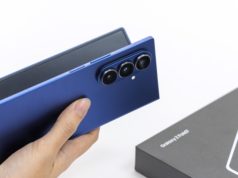The Kaby Lake-U (KBL-U) series with 15W TDP CPUs was introduced along with the 4.5W Kaby Lake-Y ones in Q3 2016. The first set of products with Kaby Lake-U were ultrabooks. However, ultra-compact form-factor (UCFF) PCs were not long behind. There are already three vendors in the market with Kaby Lake UCFF PCs – ASRock (Beebox-S), GIGABYTE (BRIX), and MSI (Cubi 2). MSI was the first to launch KBL-U UCFF PCs in the North American market under the Cubi 2 tag. This review focuses on the build and performance of the Cubi2-005B – the KBL-U UCFF PC from MSI featuring the Core i7-7500U.
Ultra-compact form factor (UCFF) PCs have become quite popular after Intel introduced the NUCs. They have become powerful enough to be the primary computing platform for many households. In addition to the Intel NUCs, many system vendors have come up with their own approach to UCFF PCs. These include ASRock (with the Beebox series), ECS (LIVA), GIGABYTE (BRIX), and MSI (Cubi) amongst others.
Kaby Lake-U, as per Intel’s claims, is fabricated on a much more mature 14nm process and brings about a 11% improvement in performance for the same power consumption. The GPU’s media engine has also been updated. On the whole, the performance improvements look good for UCFF PCs – particularly for those upgrading from the first or second-generation systems.
MSI’s take on the UCFF PC market with the Cubi an Cubi 2 is interesting from two perspectives – Rather than having separate SKUs for units with / without support for 2.5″ drives (like the GIGABYTE BRIX) or compromising on the thickness of the system to include 2.5″ drives (like the ASRock Beebox), MSI allows for interchangeable bottom plates. The default one doesn’t come with 2.5″ drive support and results in a system thickness of 3.7 cm (while the extension bay / thicker bottom plate version makes the system 4.9 cm thick). The extension bay is also included with the Cubi 2 package. The second aspect is that MSI is targeting the Cubi 2 towards effectiveness for the average consumer. While a M.2 NVMe SSD can do wonders in terms of performance, the reality is that the high-performance versions come in the M.2 2280 form-factor. Rather than sacrificing the size of the unit, MSI has decided only to have a M.2 2242 slot in the PC. Even though it is connected to the PCIe lanes from the PCH, we believe it is likely that consumers will be using M.2 2242 SATA SSDs in that slot, or, end up using a 2.5″ drive with the extension bay.
Similar to other UCFF PCs in the market, the Cubi 2 also comes in a version without memory or storage. The Cubi 2 can take up to two DDR4 SO-DIMMs (operating at 2133 MHz) and a 2.5″ drive and/or a M.2 2242 SATA / PCIe SSD. We completed the hardware build to result in the following specifications for our MSI Cubi2-005B review configuration.
| MSI Cubi2-005B Specifications | |
| Processor | Intel Core i7-7500U Kaby Lake, 2C/4T, 2.7 GHz (up to 3.5 GHz), 14nm PLUS, 4MB L2, 15W TDP |
| Memory | Micron 16ATF1G64HZ-2G1A2 DDR4 15-15-15-36 @ 2133 MHz 2×8 GB |
| Graphics | Intel HD Graphics 620 |
| Disk Drive(s) | Crucial MX200 CT500MX200SSD1 (500 GB; 2.5in SATA 6Gb/s; 16nm; MLC) |
| Networking | Intel Dual Band Wireless-AC 3168 (1×1 802.11ac – 433 Mbps) 1x Realtek RTL8168 Gigabit LAN |
| Display | 1x mini-Display Port 1.2 (3840×2160 @ 60 Hz) 1x HDMI 1.4b (4096×2160 @ 24 Hz) |
| Audio | 3.5mm Headphone Jack, 3.5mm Microphone Jack Capable of 5.1/7.1 digital output with HD audio bitstreaming (HDMI) |
| Miscellaneous I/O Ports | 3x USB 3.0 (Type-A) 1x USB 3.1 Gen 1 (Type-C) |
| Operating System | Retail unit is barebones, but we installed Windows 10 Pro x64 |
| Pricing | $499 (barebones) / $787 (as configured) |
| Full Specifications | MSI Cubi2-005BUS Specifications |
The MSI Cubi2-005B kit doesn’t come with any pre-installed OS, but does come with a CD containing the drivers. In any case, we ended up installing the latest drivers downloaded off the component vendors’ product support page. In addition to the main unit, the other components of the package include a 65 W (19V @ 3.42A) adapter, a US power cord, a VESA mount (along with the necessary screws), a 2.5″ drive extension bay, SATA data and power cables, user’s manual and a quick-start guide.

The gallery below takes us around the various chassis features.
The PCIe lanes in our review configuration of the MSI Cubi2-005BUS are distributed as follows:
- PCI-E 3.0 x2 port #3 In Use @ x1 (Realtek RTL8168 PCIe Gigabit Ethernet Adapter)
- PCI-E 3.0 x1 port #4 In Use @ x1 (Intel Dual Band Wireless-AC 3168 WiFi Adapter)
- PCI-E 3.0 x4 port #9 Not In Use @ x4 (M.2 NVMe Slot)
In the table below, we have an overview of the various systems that we are comparing the MSI Cubi2-005B against. Note that they may not belong to the same market segment. The relevant configuration details of the machines are provided so that readers have an understanding of why some benchmark numbers are skewed for or against the MSI Cubi2-005B when we come to those sections.
| Comparative PC Configurations | ||
| Aspect | MSI Cubi2-005B | |
| CPU | Intel Core i7-7500U | Intel Core i7-7500U |
| GPU | Intel HD Graphics 620 | Intel HD Graphics 620 |
| RAM | Micron 16ATF1G64HZ-2G1A2 DDR4 15-15-15-36 @ 2133 MHz 2×8 GB |
Micron 16ATF1G64HZ-2G1A2 DDR4 15-15-15-36 @ 2133 MHz 2×8 GB |
| Storage | Crucial MX200 CT500MX200SSD1 (500 GB; 2.5in SATA 6Gb/s; 16nm; MLC) |
Crucial MX200 CT500MX200SSD1 (500 GB; 2.5in SATA 6Gb/s; 16nm; MLC) |
| Wi-Fi | Intel Dual Band Wireless-AC 3168 (1×1 802.11ac – 433 Mbps) |
Intel Dual Band Wireless-AC 3168 (1×1 802.11ac – 433 Mbps) |
| Price (in USD, when built) | $499 (barebones) $787 (as configured) |
$499 (barebones) $787 (as configured) |
The MSI Cubi2-005B was evaluated using our standard test suite for low power desktops / industrial PCs. Not all benchmarks were processed on all the machines due to updates in our testing procedures. Therefore, the list of PCs in each graph might not be the same. In the first section, we will be looking at SYSmark 2014 SE, as well as some of the Futuremark benchmarks.
BAPCo SYSmark 2014 SE
BAPCo’s SYSmark 2014 SE is an application-based benchmark that uses real-world applications to replay usage patterns of business users in the areas of office productivity, media creation and data/financial analysis. In addition, it also addresses the responsiveness aspect which deals with user experience as related to application and file launches, multi-tasking etc. Scores are meant to be compared against a reference desktop (the SYSmark 2014 SE calibration system in the graphs below). While the SYSmark 2014 benchmark used a Haswell-based desktop configuration, the SYSmark 2014 SE makes the move to a Lenovo ThinkCenter M800 (Intel Core i3-6100, 4GB RAM and a 256GB SATA SSD). The calibration system scores 1000 in each of the scenarios. A score of, say, 2000, would imply that the system under test is twice as fast as the reference system.





SYSmark 2014 SE also adds energy measurement to the mix. A high score in the SYSmark benchmarks might be nice to have, but, potential customers also need to determine the balance between power consumption and the efficiency of the system. For example, in the average office scenario, it might not be worth purchasing a noisy and power-hungry PC just because it ends up with a 2000 score in the SYSmark 2014 SE benchmarks. In order to provide a balanced perspective, SYSmark 2014 SE also allows vendors and decision makers to track the energy consumption during each workload. In the graphs below, we find the total energy consumed by the PC under test for a single iteration of each SYSmark 2014 SE workload and how it compares against the calibration systems.





The Cubi2-005BUS is almost as good as the Skylake Core i3 desktop (in terms of scores), but, consumes about half the energy to provide that performance. This shows the energy efficiency provided by the Kaby Lake platform.
Futuremark PCMark 8
PCMark 8 provides various usage scenarios (home, creative and work) and offers ways to benchmark both baseline (CPU-only) as well as OpenCL accelerated (CPU + GPU) performance. We benchmarked select PCs for the OpenCL accelerated performance in all three usage scenarios. These scores are heavily influenced by the CPU in the system. The Cubi2-005BUS is equipped with the highest-end KBL-U CPU, and the power of the Core i7-7500U enables it to easily outscore all the UCFF PCs from the previous generations. In the GPU-related bechmarks, the Skylake Iris graphics-enabled SKU (Intel NUC65SYK) comes out on top.



Miscellaneous Futuremark Benchmarks





3D Rendering – CINEBENCH R15
We have moved on from R11.5 to R15 for 3D rendering evaluation. CINEBENCH R15 provides three benchmark modes – OpenGL, single threaded and multi-threaded. Evaluation of select PCs in all three modes provided us the following results. These results show that the higher configurable TDP (cTDP-Up) of the Core i7-6500U in the GIGABYTE GB-BSi7HAL-6500 enables it to outscore the Cubi2-005BUS in the multi-threaded and OpenGL runs. The NUC65SYK also comes out on top in the OpenGL case because of the Iris GPU.



In this section, we mainly look at benchmark modes in programs used on a day-to-day basis, i.e, application performance and not synthetic workloads.
x264 Benchmark
First off, we have some video encoding benchmarks courtesy of x264 HD Benchmark v5.0. This is simply a test of CPU performance. The cTDP-Up of the Skylake BRIX enables it to to get slightly higher numbers in the second pass when compared to the Kaby Lake Cubi2-005BUS. Actual x264 encoding performance with the Kaby Lake processors and using the latest x264 releases…










![[CES 2026] From Communication to Understanding…Samsung to](https://loginby.com/itnews/wp-content/uploads/2025/12/CES-2026-From-Communication-to-Understanding…Samsung-to-100x75.jpg)

